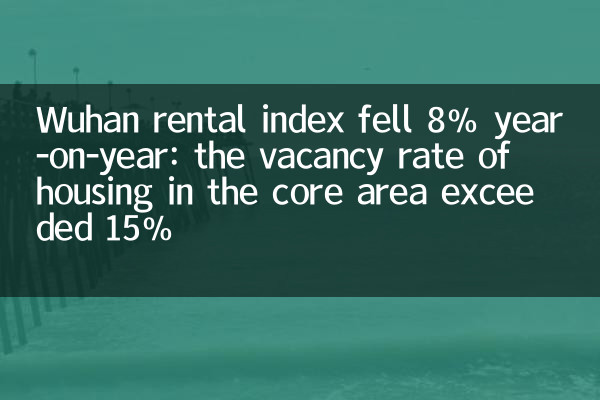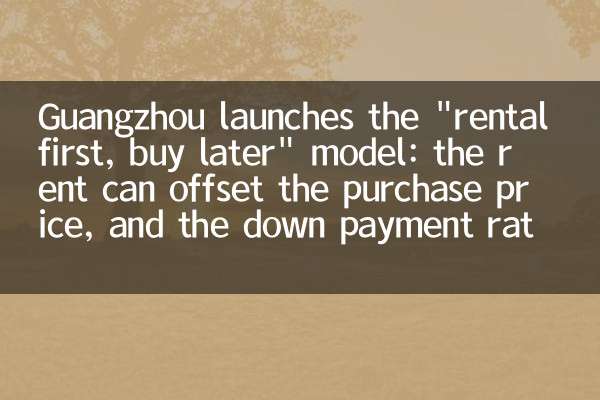Wuhan rental index fell 8% year-on-year: the vacancy rate of housing in the core area exceeded 15%
Recently, Wuhan’s housing rental market has undergone significant changes. According to the latest data, the Wuhan rental index fell by 8% year-on-year in 2024, and the vacancy rate of housing in core areas exceeded 15%, reflecting the adjustment of market supply and demand relationship. The following is a detailed data analysis and hot topic interpretation.
1. Comparison of rent index and vacancy rate data

| index | The same period in 2023 | Current in 2024 | Year-on-year changes |
|---|---|---|---|
| Average rent (yuan/㎡/month) | 42.5 | 39.1 | -8% |
| Core area vacancy rate | 10.2% | 15.3% | +5.1% |
| Suburban vacancy rate | 8.5% | 12.0% | +3.5% |
2. Analysis of the reasons for market changes
1.Supply and demand relationship adjustment:In recent years, the number of new rental housing units in Wuhan has continued to grow, especially the concentrated entry of long-term rental apartment projects into the market, resulting in oversupply. At the same time, some migrant workers flowed to surrounding cities, and the demand side contracted.
2.Economic and environmental impact:Employment fluctuations in some industries affect tenants' payment ability, and landlords actively lower rents to reduce vacancy risks.
3.Competition in the core area intensifies:There are many new housing sources in traditional popular areas such as Optics Valley and Wuchang Binjiang, and the space for tenants to choose has expanded, and the bargaining power of landlords has weakened.
3. Comparison of regional rent differences
| area | Current average rent (yuan/㎡/month) | Vacancy rate |
|---|---|---|
| Light Valley | 45.6 | 16.8% |
| Wuchang Binjiang | 48.2 | 14.5% |
| Hankou Center | 43.1 | 15.0% |
| Caidian | 28.3 | 11.2% |
4. New trends in tenant behavior
1.Prefer cost performance:Tenants prefer to choose sub-central areas with low rent and complete supporting facilities, such as Houhu and Sixin.
2.Popularization of online house viewing:More than 70% of tenants learned about the property through VR viewing or live broadcast, and the offline viewing volume decreased by 20% year-on-year.
3.Reached short-term rental demand:Due to increased work flexibility, the monthly rent ratio has dropped from 85% to 78%.
5. Industry forecasts and suggestions
Experts pointed out that the Wuhan rental market may continue a moderate downward trend, and landlords are advised to pass“Rent + Service”The model improves competitiveness, such as providing value-added services such as cleaning and maintenance. At the same time, it is recommended that the government strengthen supervision of long-term rental apartment companies to avoid vicious competition.
Overall, Wuhan’s housing rental market has entered a period of adjustment, and tenants’ bargaining space has increased, but the high inventory pressure in the core area still needs time to digest. In the next six months, the rent level may further bottom out and then gradually stabilize.

check the details

check the details